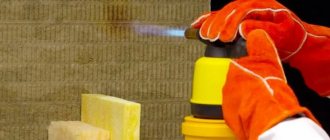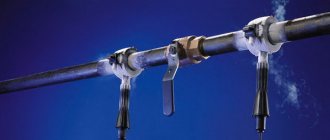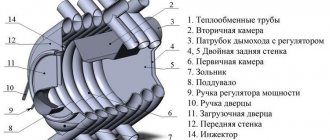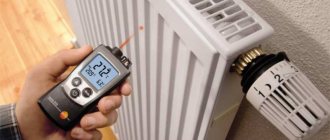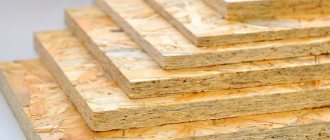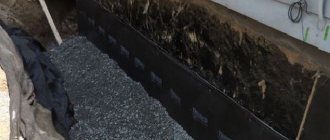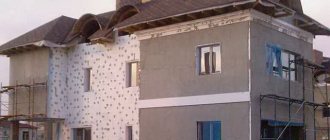Materials
Publication date: 12/05/2019
0
5222
- Weaknesses in frame buildings
- Selecting a grid
- The advantages of this method
- Protection of the house during the construction phase
- Combination of mesh and other protection methods
Frame houses are popular due to the speed of construction and low cost compared to capital construction. However, such buildings also have disadvantages, one of them is the breeding of rodents. It is worth taking care of protection from mice and rats at the construction stage. A metal mesh will help reliably protect your home from rodents. Let's talk about how mice usually get into the house, and how to choose and install a mesh to protect against them
Advantages of frame houses
This technology has many advantages. First of all, it is the low cost and high speed of construction. Another feature of a frame house is the minimum shrinkage value. Such a house, unlike a heavy brick structure, cannot be damaged by design errors made during the construction process, uneven shrinkage, or soil characteristics. Construction does not require a massive concrete foundation - special foundation slabs, screw or bored piles are used. Special treatment of piles not only simplifies the structure and increases its service life, but also makes subsequent repairs of the piles possible. Thanks to these features, it is possible to quickly deliver a turnkey, fully equipped house.
The durability of the frame structure of the house is quite high. In such a house, all internal systems can fully function for 30 years without the need for repairs. After this period, it is recommended to carry out a planned overhaul of communications. But the supporting frame of such a house, with proper maintenance, will last up to 90 years.
Rodents in a frame house
Mice appear in a frame house, as well as in other types of residential buildings, in search of food. If access to food is provided on a regular basis, mice will not only linger, but will also build a cozy nest away from human eyes, begin to actively reproduce and increase the population.
How to prevent mice from breeding.
Often mice appear in the house with the onset of cold weather - optimal living conditions are created in the room. Over time, pests begin to look for food and actively colonize the entire living area of your frame frame.
Mice appear in a private house due to mistakes made by builders during the construction process. If there are gaps between the joints in the wall and floor area, rodents are likely to choose the frame as their home. Since the design involves a sheathed frame, optimal space is created between the panels for the movement of small rodents.
On a note
Mice often breed in the insulation of a frame house, so it is extremely important to choose the right material that is not suitable for rodent housing.
Remember that there are absolutely no obstacles for hungry mice, especially if they smell cereal, flour, sugar, or bread nearby. Try to store any food not in bags or bags, but close everything in airtight containers.
Disadvantages of frame houses
Naturally, there are also disadvantages in frame-type structures. Even at the design stage, it is necessary to take a responsible approach to the selection of materials used. Thus, an attempt to save money can lead to the use of low-quality Chinese materials, for example, OSB-3 boards. In the manufacture of such boards, phenol-formaldehyde resins are used as a binder. If the formaldehyde emission class is E2 or more, then this substance will actively evaporate into the air in the room, which poses a danger to human health. Materials with zero emission class are considered safe.
Mineral short-fiber wool and low-quality basalt wool are a source of carcinogenic dust. Thus, the correct selection of materials used in construction will guarantee a high-quality and healthy life for people living in a frame house.
In addition, frame houses are classified as wooden. This indicates an increased fire hazard. This drawback can be eliminated by using fire-resistant materials: special plasterboard, fireproof panels made of SML, DSP. The beams from which the frame is made must be impregnated with fire-resistant impregnations. Expanded polystyrene is selected class G1 or G2. The disadvantages include the low vandal resistance of such houses. The walls of a frame house can be destroyed by one person using a chainsaw, which cannot be done with stone walls. In addition, the materials of the frame and other structural elements are defenseless against attack by small pests - mice, rats. This seemingly insignificant fact can make a person’s life in the house absolutely unbearable. Rodents gnaw holes and tunnels in the insulation material, destroy expanded clay and glass wool, and can live in the walls of a frame house for a long time. This problem is especially relevant when low-quality foam plastic was used as insulation during the construction of the house.
Effective methods of protecting a frame house from rodents
Measures to protect against various rodents entering your home may vary. The most effective measures to prevent rodents should be taken before building a house.
Exist:
- active (various poisons, repellers, mousetraps and humane traps);
- passive methods (grids, insulation, use of special solutions).
Passive methods of protection
Passive methods of protecting frame houses are used before and during construction, which will help avoid rodent infestations in the future.
Net
Net
The mesh is a steel structure made of wire and consisting of additional small cells. It is one of the most effective methods of passive protection against pest penetration. The wire should in no case be thin, at least 2 millimeters thick. This point is worth paying special attention to, since rats can easily gnaw through the thin structure.
Insulation materials
Insulation materials
Since the design of the house contains thermal insulation blocks, which are a very attractive refuge for rodents, special attention should be paid to this point. Thermal insulation blocks must be coated with a special solution of lime and borax, and then the blocks must be rolled in with universal insulation - ecowool. The coating should be very dense.
Read on the topic - Which insulation is not chewed by mice and rats
Monolithic slab
Monolithic slab
The best way to protect a frame house from rodents is to install a reinforced concrete monolithic slab at the base of the house. The slab must be filled with expanded clay. Thanks to this, rodents will not be able to enter the house.
Active methods of protection
If the house has already been built, and the protection installation technologies did not bring any effect, or were not designed correctly, then it is necessary to resort to active protection methods.
Poisons and poisons
Poison and poisons
There are many different chemicals available to kill rodents, but when used, there is a risk of poisoning pets or children. Therefore, when using various poisons, you should be very careful.
Poisons such as rat poison, “Rat Death” poison, and various powders are used to suffocate rats and mice.
Mousetraps
Mousetrap
A mousetrap is a simple method that has been proven over the years. There are different types of mousetraps: mechanical and electronic and humane mousetrap that does not kill rodents.
Repellers
Repeller
Installing ultrasonic and other repellers is the most humane way to get rid of rodents, as well as one of the most effective.
They are an electronic structure that emits ultrasonic or electromagnetic waves in various frequency ranges. This sound is extremely unpleasant for rats, mice and moles, as it has a depressing effect on the nervous system of rodents, but the sound does not cause any inconvenience to humans. Currently, repellers such as “Tornado-200”, “Tornado-800”, “Grad 1000”, “Grad 500”, “Grad 550 UZ” are available in stores.
*The numbers in the names of the repellers indicate the area of effect in square meters!
Read on the topic - Inexpensive insect and rodent repellers - TOP 5
Glue trap
Glue trap
It is also an effective means of catching rodents. Once on the surface of the trap, rodents cannot move.
Protection from rodents during construction
The best option is to take care of protection from rodents at the design stage of the house. So, sometimes building blocks are sprayed with a solution of borax or ordinary lime. It is advisable to install ecowool in the floor coverings on the lower floor. It is a material made up of 80% wood cellulose and 20% borax. This composition acts as an antiseptic and prevents the appearance of pests.
Various components can be added to the insulation to repel rodents. It can be dry grass with a pungent aroma - wormwood, mint, pine branches, burdock. Ash, slag, and tobacco give the same effect.
Prevention measures
Mice inhabit a frame house for a number of specific reasons: in search of food and a place protected from drafts and cold. The rather specific design of the “framework,” unfortunately, does not serve as a serious obstacle for such animals.
This happens because when building a frame it is quite difficult to avoid the appearance of holes in the joints of the base of the house, its floor and ceilings. In addition, materials that are easily chewed by mice are widely used for cladding and as insulation. As a form of prevention, experts advise using the following methods to combat unwanted “neighbors”:
- The use of a special rodent mesh for cladding a frame house;
- Floor and basement protection;
- Using the “correct” insulation;
- Strict adherence to frame construction technology.
The most effective ways to protect a frame house from rodents are measures that are used at the initial stage of construction.
Protecting the frame from rodents at the start of construction
So, the most effective ways to protect a wooden cottage from rodents and insects are the following:
- It is better to equip the foundation with reinforced concrete slabs, because they cannot be chewed through;
- Ecowool should be used as insulation. It is 80% cellulose. And a 20% mixture of borax and brownic acid, which provides real protection in the fight against any type of pests;
- Wooden frame elements must be regularly treated with a special mixture of borax and lime;
- To fill interior partitions, you should use slag, ash, wormwood or peppermint. They keep rodents away from their homes with their pungent odor;
- Another means of effective protection is a metal mesh in the form of small cells. It covers all floors, as well as the foundation and walls.
Using these simple methods at the initial stage of building a frame house will prevent rodents from entering the home with a 99% probability.
How to protect a frame residential building from rodents?
It is quite easy to detect mice and rats that have appeared in a house outside the city. Their appearance is indicated by characteristic scraping sounds behind the casing or in a frame-type sandwich, spoiled food and pieces of furniture. As soon as the pests feel relatively safe, they calmly walk around in the basement, garage and rooms on the first floor.
Today there are quite a few ways to combat rodents. However, they should be used with caution. For example, many homeowners, in the old fashioned way, use poison, which can cause even more problems.
Firstly, both domestic animals and small children can try it, which will lead to dire consequences. Secondly, mice do not die immediately, but after some time. If death overtakes a rodent under the floor, in the wall or in the ceilings, the smell of its corpse will freely spread throughout the room. It can be eliminated by completely disassembling both the sheathing and the insulation. Because of this, rats and mice that have settled in the “framework” should be driven away or caught.
Metal grid
Installing a metal mesh is very effective, which will physically prevent rodents from entering the house. It is installed in places where mice are most likely to penetrate, for example, into the floor or walls. The mesh should have a fine cell pitch - the most optimal is 5 by 5 millimeters. Small rodents have a very flexible body and can fit into fairly small holes - less than one centimeter in diameter. In addition, there are cases where rodents have bitten a wire 1.5 millimeters thick.
Sometimes the mesh can be replaced with sheets of structural steel, the thickness of which is up to one and a half millimeters. When treating walls in this way, the mesh is installed to a height of approximately one meter. The grid is also laid along the foundation. The point is to lay such a grid to a depth greater than mouse holes. This depth is up to 80 centimeters. The mesh or sheet metal can be laid not close to the foundation, but retreated a certain distance, and then filled with crushed stone in the gap between the mesh and the foundation. Instead of a mesh, you can dig a trench around the perimeter of the house and fill it with coarse crushed stone.
The right choice of insulation
Many people choose polystyrene foam as insulation because its cost is low and saves money. But this option is not the best. Rodents will quickly chew through this material if they decide to get into your home. If possible, it is better to combine polystyrene foam with mineral wool, although this does not always solve the problem. Experts recommend using ecowool to insulate the structure. This is a material with a high degree of adhesion; it tightly fills even small gaps, although it is much higher in cost. The use of ecowool will reduce the likelihood of rodents entering the house. In addition, the material does not generate dust and does not contain components hazardous to humans.
Important: ecowool is difficult to install, so it must be applied by a specialist familiar with the technology of such work. If there are errors in application, the material may lose its properties and shrink.
If there are mice under the floor
The fact that there are mice under the floor of a frame house can be easily recognized by the characteristic sounds. In this case, experts recommend making a so-called expanded clay castle. Expanded clay is a material that is obtained by firing low-melting clay. A layer of expanded clay about 30 centimeters thick is placed on the ground. This layer is covered with polyethylene and then covered with a double layer of OSB-3. Finally, the laminate is laid. Between the subfloor and the main floor you also need to lay a layer of expanded clay of 10 centimeters. This method is quite labor-intensive, but it allows you to avoid the problem of floor damage by rodents.
How to protect a building from the penetration of small pests?
The first step is to find out the weak points in the frame structure, then you should strengthen these areas using a reliable barrier made of steel mesh.
Protecting the ventilated gap
The ventilated gap between the sheathing and the layer of thermal and waterproofing is one of the most convenient places for mice to penetrate. The lower perimeter of the space should be decorated with fine-mesh metal mesh. The reinforcing structure is a tray extending onto the walls by at least 40 mm.
Creating armor for the foundation
The insulated base is another weak link in the structure; it should first be equipped with a metal mesh and plastered. Such armor can protect against the invasion of small rodents if it is buried at least 0.8 m into the base. It is unlikely that a mesh that is made from ground level will be of any use, since it is not difficult for mice to dig under the line of metal “armor” and get through to the house. To protect the foundation, you can also use sheet metal with a thickness of 1.5 mm.
How to protect the floor?
The floor structure is also a vulnerable area, and therefore it is necessary to wrap the trim underneath with fine-mesh metal mesh during the construction phase. Another way to create a barrier against small rodents is to lay mesh across the subfloor. Only after completing these works do they begin to design the hydro- and thermal insulation of the base.
The next option for protecting the lower plane of a building from mice involves several stages:
- Expanded clay 0.3 m thick is poured onto the subfloor;
- carry out waterproofing using polyethylene film;
- OSB-3 slabs are laid in two layers;
- pour a second layer of expanded clay 10 cm thick.
As experts note, boric acid can be used against mice, since rodents cannot tolerate it. To do this, treat the wood boards with a solution of boric acid. It is worth remembering that this is just an additional measure: the chemicals wear off over time.
Eliminating cracks in corners
Small rodents easily enter the house through cracks in the corners, so special attention is paid to protecting these areas. To create a reliable barrier against nosy pests, you should equip the outer corners with a metal mesh along the entire height. The priority is for stainless steel mesh models with a wire thickness of 2 mm and 10x10 mm cells.
Ultrasonic generators
What to do if the house has already been built, and despite all the preventive actions, it is still attacked by rodents? There are many proven ways to eliminate mice, among which a very effective and environmentally friendly method is the use of ultrasonic repellers. These are devices whose operating principle lies in the emission of sound waves that are not audible to the human ear. At the same time, rodents clearly hear an unpleasant sound, which forces them to leave the area of influence of the device. Such devices are effective not only against mice - installing an ultrasonic repeller can also rid an area of larger rodents - rats, moles and other pests.
Having a cat in the house, or better yet several, can help prevent the appearance of small pests. Everyone knows with what pleasure hunter cats exterminate rodents. Indeed, even the smell of a predator repels rodents. But this doesn't always work. You may come across a cat that will live in the same territory with mice in complete harmony, without causing them any harm. Natural enemies of small rodents are weasels and stoats. Several of these domesticated animals can quickly clear a house of mice.
Damage from rodents in wooden houses
Get rid of mice and rats - contents
- Damage from rodents
- Reasons for rodents entering a frame house
- Passive measures to protect against mice and rats
- Photo - mice entered through the holes
- Active methods of protection
- Poisoned rodent baits
- Classic mousetrap
Rodents can destroy food supplies that are in the house. But the most dangerous thing is that rats and other rodents are carriers of dangerous infectious diseases such as leptospirosis, various intestinal diseases, cholera and many other diseases. Fortunately, this problem is completely surmountable.
Mousetraps
This method of eliminating rodents has been known for centuries. A mousetrap is a simple device that is triggered when an animal pulls the bait. Mice are not selective in their food, and cracklings or a piece of raw or fried lard, cut off with the skin, are the best bait. Mousetraps are placed on a flat, hard surface in places where pests most frequently appear. If you choose the right bait, you can quite effectively eliminate all the mice living in the house. In addition, the method is quite environmentally friendly and cannot harm humans.
You can make traps for rodents yourself. So, glass bottles, for example, beer bottles, are used for this purpose. You need to pour a little aromatic unrefined sunflower oil into the bottle, and place the bottle itself at an angle of about forty degrees, securing it with a rope. As practice shows, mice often fall into such a trap and up to five animals can end up in a bottle overnight.
Another trap option is using a bucket and two planks. Fill a regular bucket with water up to halfway. A board is placed on the bucket, along which the mouse can climb up. Two more strips are installed on top, one is placed on the bucket itself, and the second is crosswise with the first; it should be somewhat shorter. You need to place the bait on the edge of the short bar. The meaning of this design is that when the mouse approaches the treat, the bar tilts under its weight and the animal falls into the bucket. Then the bar returns to its original position. This method is quite effective, but is intended for enthusiasts, since it is necessary to carefully select the length of the short board and make sure that it returns to its place.
Chemical substances
The most effective way to control small rodents, insects and other pests in the house and garden is poison. The method is not entirely humane, but it allows you to solve the problem very quickly. Such products are available in a variety of forms. These can be solid briquettes, dough briquettes, poisoned grain, granules, which retain their poisonous properties for quite a long time. In addition, the cost of drugs offered on the market varies greatly, which allows you to choose the most suitable remedy.
The poison, entering the rodent's body along with the bait, causes the death of the animal, even if the amount of the substance was very small. This method requires caution, since when working with toxic substances there is a risk of poisoning yourself. Therefore, you need to work with poison with gloves and, preferably, in old unnecessary clothes, which you can then simply throw away. The poison must be located in places that are difficult to reach for the inhabitants of the house, so that no one in the household can get poisoned. Pets should also be carefully protected. Before you begin, carefully read the attached instructions, description of the product, and evaluate your capabilities.
There is one point that can cause trouble for the residents of the house. If a mouse that has eaten poison crawls into a hard-to-reach place before dying. In this case, it will rot, emitting an unpleasant odor for a long time. You will have to look for the source of the smell, open the floor or dismantle the walls.
Fact: modern poison manufacturers offer a product after which the animal begins to experience suffocation and tries to leave the premises. This can help prevent odor in some cases.
Other methods
The struggle between humans and rodents has been going on for many centuries. People are constantly coming up with new ways to protect their home and property from damage by pests. So, burnt wooden blocks and branches are placed under the floor covering. The smell of burnt wood repels mice. In addition, you can use other aromatic repellers - pine, mint, tobacco, added to the insulation. Red hot pepper is poured around the perimeter of the house and, if possible, into the walls. It is also known that rodents do not tolerate the smell of burning wool. The old method is to put a piece of wool in an old unnecessary saucepan, make several holes in the saucepan and set the wool on fire, then place this container in the basement. The smell of smoke will slowly spread throughout the house, driving the pests away.
Source
Fighting methods
If rodents were able to enter the room, you need to think about how to get rid of mice in a frame house. There are many ways. It is necessary to take into account the number of pests and the structural features of the frame house.
Methods of controlling rodents Using poison is not the best option, since the mouse can die in the wall, and the cadaverous smell will spread throughout the house. Even if a product with a mummifying effect is used, an unpleasant odor is present, although not so strong. Mice in a frame house must either be caught or driven away.
Mechanical methods to fight from within
You can catch a mouse using traps, store-bought traps, or you can make mousetraps with your own hands.
- One of the options for making your own is a plastic bottle. Cut off the neck. Mouse bait is placed inside and the walls are coated with sunflower oil. Place the neck inside the bottle and secure it with tape. Leave the trap in any room. The mouse easily climbs into the bottle through the narrow neck, but the slippery walls prevent it from getting out.
- Water is poured into a bucket, husks, straw, leaves are crushed on top, a spoonful of vegetable oil is poured, seeds and grain are sprinkled. A ladder - a stick - is placed next to the bucket. The mouse crawls for food, falls into the water, and drowns. The top layer is restored, and another rodent may fall into the trap.
- A sticky trap is one of the simplest, most convenient ways to catch rodents in the country. Making a trap yourself is not difficult. Rodent repellent glue is applied to plywood, thick cardboard, and oilcloth, and the base is fixed to the floor so that the mouse does not drag the trap with it. The bait is placed in the center. The rodent sticks its paw, tries to get out, but falls even further into the trap. Several pests can be caught at once. But the biggest drawback is the cries of animals, which you don’t want to listen to in a residential building.
